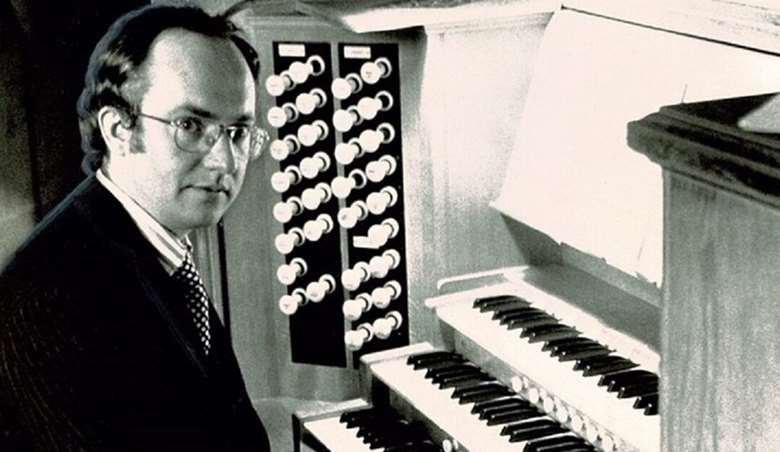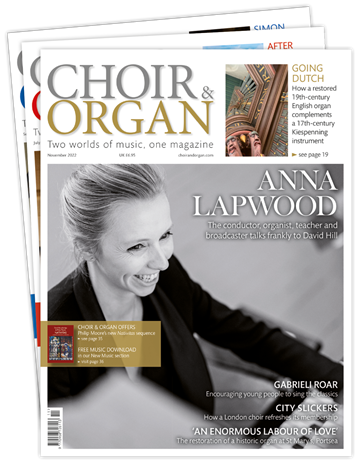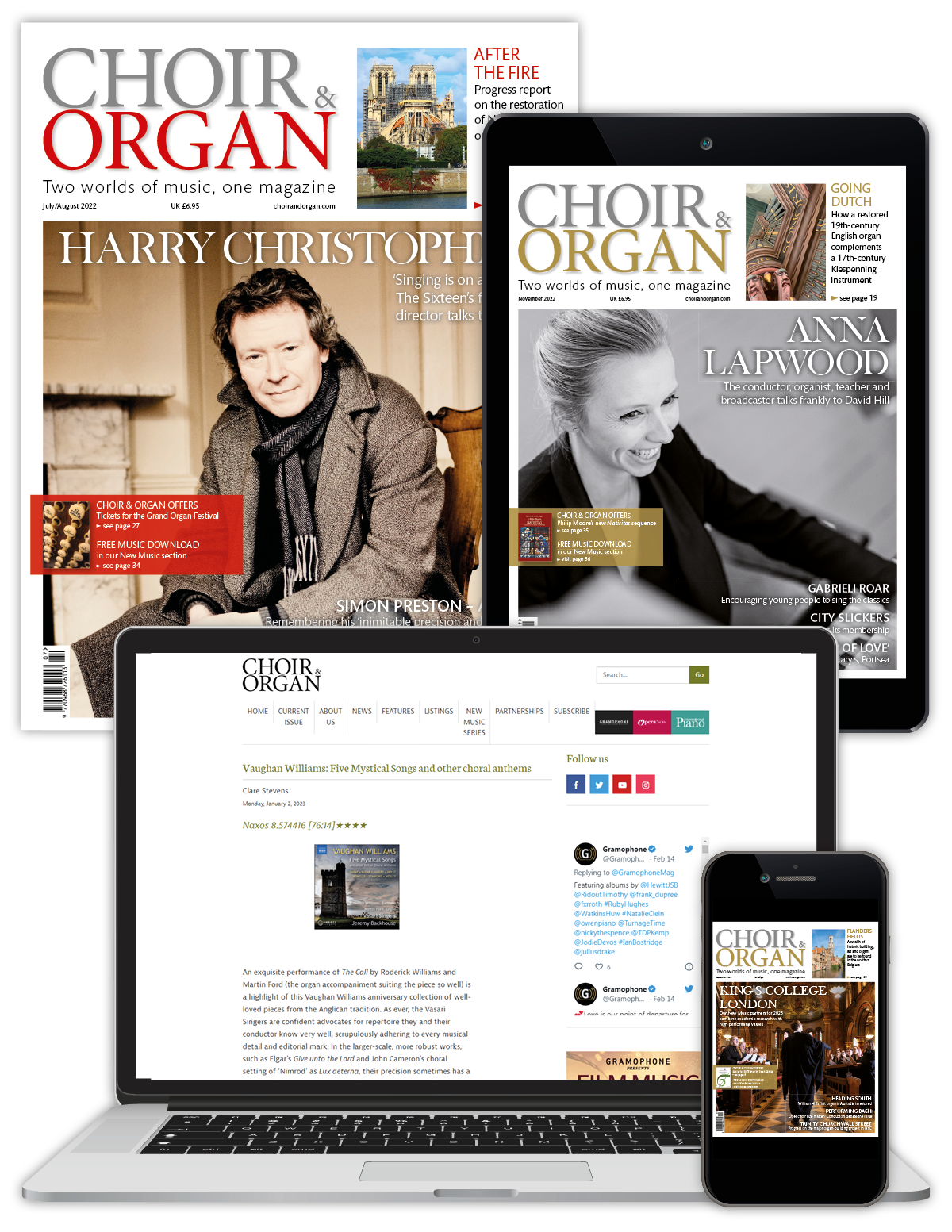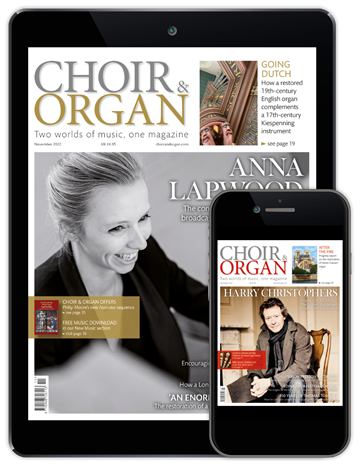Nicolas Kynaston (1941–2025)
Stephen Farr
Friday, April 25, 2025
Virtuoso organist Nicolas Kynaston, who died in March, gave much to the musical world as performer, recording artist and teacher

Preston/Murrill; Jackson/Cocker; Danby/Boëllmann. To many organists of a certain generation, these names will instantly bring to mind the EMI compilation, The King of Instruments. They might continue the list: Willcocks/Bach – and Kynaston/Vierne. This last track – the Carillon de Westminster – was my own first encounter with Kynaston’s playing. Even to my novice’s ears there was something that set it apart; I couldn’t define quite what it was, although I remember being intrigued by his registration. Other recordings by him soon joined my collection: Popular Organ Works at the Albert Hall (for which he won an award for sales, which he proudly showed to visitors); the Elgar Sonata at Ingolstadt; Bach at Clifton. A bit later, I lapped up the gloriously schlocky 1970s horror film Tales from the Crypt without knowing that Kynaston was the organist on the soundtrack (this, and Joan Collins and Peter Cushing in the cast, too. What a time to be alive).
Kynaston enjoyed mentioning this appearance when interviewed; it seems pleasingly emblematic of the slightly quixotic aspects of his upbringing. He came from a spiritual and artistic family; his mother was a violinist, his father a priest and painter. A former student recollects ‘waking up on the spare bed in the study, usually with a sore head, to be greeted by the sight of barely covered, cavorting water nymphs, as depicted in an enormous oil painting hanging overhead, painted by Nicolas’s father’.
After a choristership at Westminster Cathedral, Kynaston attended Downside, but after taking lessons with Fernando Germani, he walked out, never to return. After further study with Germani and Ralph Downes, he returned to Westminster Cathedral at the age of just 19 as Organist, leaving after 10 years to become one of the great virtuosi of the 20th century. That cathedral and its organs always kept a special place in Kynaston’s affections; a recording of his final (2009) recital there is available on YouTube.
Kynaston’s renown is easy to understand. His performances packed a punch, as one former student put it to me; his playing was ‘breathtaking, thrilling, communicative, moving, intimate, grand’. His recordings (many now easily accessible online) were, as one producer attests, prepared as if they were performances; Liszt’s Fantasy & Fugue on the Chorale “Ad nos, ad salutarem undam” was once captured in a single 40-minute take. Listening now, I can define the quality my nine-year-old self found so enthralling: the extraordinary musical energy he generated by staying on the front of the pulse, a characteristic which also enabled a remarkable command of structure. And, as a former student says: ‘That technique. Effortless’.
Public achievement is one thing. But Kynaston’s private activity, as a teacher, reveals another side to his musical character. His students speak with unanimous respect and affection of their association. He was civilised, cultured, thought-provoking, encouraging, generous, and heedless of time when it came to teaching – lessons would extend long past their allotted span, with no extra payment expected.
He demanded high standards. NK: ‘[redacted]?’ Student: ‘Yes, Nicolas?’ NK: ‘There should never be any need for wrong notes in the pedals, should there, [redacted]?’ Student: ‘No, Nicolas’. But he was no dictator: ‘He encouraged and enabled me to seek my own authentic voice… he provoked me always to be curious and to explore numerous different approaches – even (especially?) those that didn’t sit well with me at first’. He gently repaired bruised confidence and broadened musical horizons, instilling in students a sense of line which came from his experience as a horn player. ‘I have always felt how important it is for organists to widen their horizons, including by playing an orchestral instrument. It is crucial to understand, apart from anything else, how breath works. A musical line needs to breathe.’ On the matter of breathing, lessons were famously wreathed in cigarette smoke – he was notorious for regularly blocking the chapel drains of one Cambridge College with discarded fag ends.
Kynaston’s last months were spent in a nursing home. He found this difficult, but frequent visits from former students and colleagues brightened his days, and in their company he enjoyed reminiscing about the past and listening to recordings of his playing. The kindness and respect he showed to young players at the start of their careers was repaid in full.
Kynaston’s own words should close these reflections. ‘I have been obliged sometimes to say to students, “Are you enjoying playing this piece?” I am afraid that just occasionally people have replied that they have not considered that before. But this is the point, the heart of what we do as musicians. The performer is a communicator, trying to express what he or she feels about the music, and trying to capture what the music itself, the composer, is saying, is meaning in the composition. But enjoyment, pleasure, is the core. That is your job. Otherwise, there is no reason to do it.’
May he rest in peace and rise in glory.









